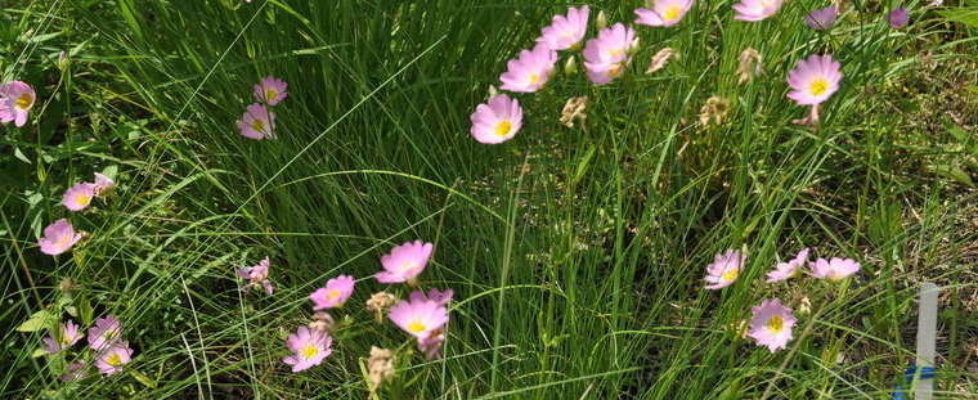Letter: Large Water Withdrawals Would Jeopardize Rare Plant Species in Charlestown
The following letter was submitted to the Energy Facility Siting Board on the subject of water withdrawal to cool Invenergy’s power plant, and is shared with us here by the author Keith Killingbeck. Dr. Killingbeck is Associate Dean Emeritus of the Graduate School and Professor Emeritus of Biological Sciences at the University of Rhode Island.
Dear Chairperson Curran, and Members Agrawal and Coit:
In addition to what appears to be overwhelming evidence in favor of terminating the application submitted by Clear River Energy to build an energy facility in Burrillville, I would like to add another concern that has not yet emerged.
The apparent promise of water from Tribal Lands within the Town of Charlestown to the proposed Invenergy power plant in Burrillville has the potential to negatively impact rare, threatened, and endangered plant populations that grow along the margins of Tribal ponds. Seven plant species in these categories of endangerment are listed in the most recent document that formally determines species’ rarity in Rhode Island; Rhode Island Rare Plants 2016. Populations of all seven species have been documented in the Rhode Island Natural History Survey database as growing along the shores of one or both of the two major ponds on Tribal Lands. Changes in the hydrology of these ponds from direct removal of water, or from extraction of groundwater to supply the needs of the Invenergy power plant, would potentially have significant negative effects on these rare species that are already being preserved on Narragansett Tribal Lands.
Even if water was to be withdrawn from a site in Westerly rather than from Charlestown, as has been suggested by some individual members of the Narragansett Indian Tribe, the fact that the water would be extracted from the single aquifer underlying both towns would still jeopardize the existence of the rare plant species in Charlestown, and throughout the entire area underlain by the Pawcatuck Basin Aquifer System.
It has been my privilege to have Tribal permission to search for, document, enumerate, and map populations of rare plant species that grow in, or within the immediate vicinity of the two major Tribal ponds in Charlestown. Just this past October, another botanist (Hope Leeson) and I found thousands of individuals of Sabatia kennedyana (Plymouth gentian) and Lachnanthes caroliniana (Carolina bloodroot) growing at the shore edge of one of the two Tribal ponds. These are unprecedented numbers for both Sabatia (RI State Endangered) and Lachnanthes (RI State Threatened) in our state. Both species, along with the five additional rare species alluded to above, have evolved to prosper in a very restrictive set of environmental conditions. Major changes in the hydrology of these ponds due to the removal of vast quantities of water from the Pawcatuck Basin Aquifer System for use in the proposed Invenergy facility could conceivably threaten the existence of these remarkable plant species that the Narragansett Indian Tribe has protected so diligently.
For the reasons I have outlined, and for the landslide of reasoned opposition to what appears to be an ill-conceived, poorly planned proposal, I respectfully request that you seriously consider terminating the quest by the Clear River Energy Center to build a power plant in Burrillville, Rhode Island.
Thank you for your consideration, and for the immense amount of time you have already spent on this issue. Your efforts are appreciated.

You can learn more about Dr. Killingbeck at his profile at URI.
The banner image in this post is a photograph of Sabatia kennedyana (Plymouth gentian).
Visit Our Water Withdrawal Page For More On This Issue
December 30, 2017 @ 2:22 pm
Thank you, Dr. Killingbeck.
…Just wondering if you have read the “Biological Inventory” of the power plant site that Invenergy filed with the EFSB on August 2nd. It was done by ESS Group of East Providence.
We are told that this study, although done over less than a six month period, is, of itself, a very credible work. Unfortunately, to date, it has been ignored by the media. Few people, apparently, with expertise such as yours, know of it or have read it. So… If you haven’t done so already, please check it out. You will find “Biological Inventory” among the columns of information at the PUC’s “Invenergy docket” website. The site, on the northeast border of the George Washington Wildlife Management Area, appears to be an unusually rich habitat. ESS found 47 species, flora and fauna, that are designated as “Species of Greatest Conservation Need” by DEM’s 2015 Wildlife Action Plan.
Again, thanks for your testimony against this proposal.
December 24, 2017 @ 10:21 am
Well said Keith